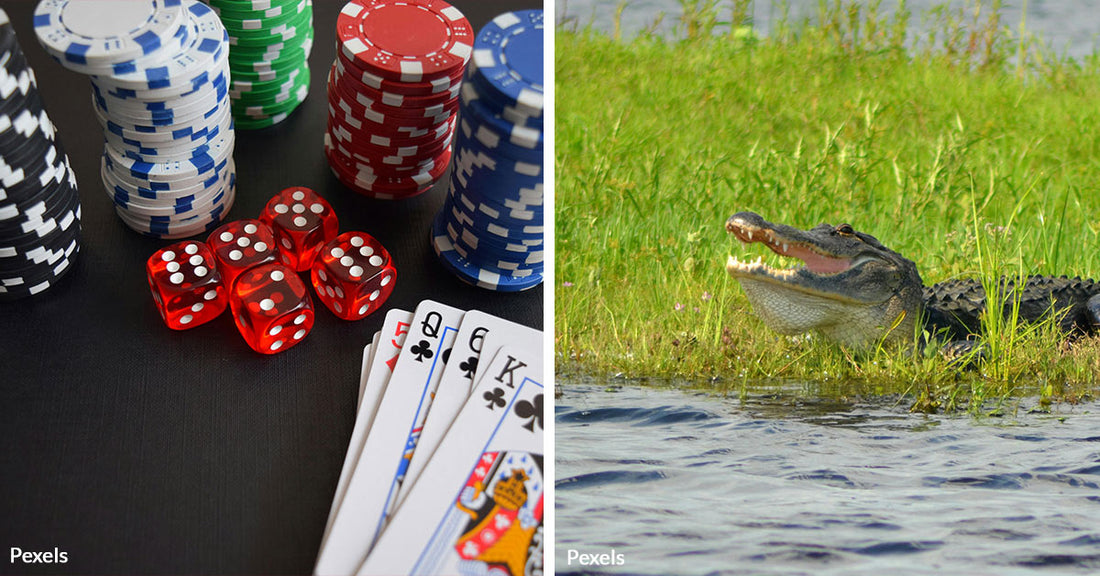Florida Bets Big on Nature: Casino Revenue Now Fueling Conservation Goals
Matthew Russell
In a groundbreaking shift, Florida is channeling substantial casino revenues from the Seminole Tribe's gambling operations into environmental conservation projects.
This strategic move, formalized through recent legislation, promises to inject over $750 million annually into various green initiatives, including the vital restoration of the Florida Wildlife Corridor and improvement of water quality across the state, the Tallahassee Democrat reports.
 Photo: Pexels
Photo: PexelsFlorida has started using casino revenues for environmental conservation.
A New Deal: The Seminole Compact
The 2021 gaming compact between Florida and the Seminole Tribe has paved the way for exclusive rights to online sports betting and certain casino games. In return, the Tribe will contribute an estimated $2.5 billion in the first five years, with potential billions more over the 30-year term of the agreement, according to CBS Miami.
Governor Ron DeSantis hailed the compact as a "landmark piece of legislation," noting its importance in maintaining Florida as a leading hub for fishing and boating.
 Photo: Pexels
Photo: PexelsThe Seminole Tribe's gambling profits are now directed towards green initiatives.
Conservation Commitments: Where the Money Goes
The funds from the gambling revenue are earmarked for several critical areas:
- Land Acquisition and Management: $100 million is designated annually to enhance the Florida Wildlife Corridor, according to Orlando Weekly, which spans from the Panhandle to the Everglades, aiming to protect and connect habitats across 18 million acres of land.
- Water Quality and Wetlands: Efforts include upgrading outdated water systems and enhancing water management practices, especially around the ecologically significant Lake Okeechobee, details CBS Miami.
- Invasive Species Removal: An ongoing initiative targets the eradication of non-native species that threaten local ecosystems, reports Outdoor Life.
 Photo: Pexels
Photo: PexelsThis funding supports the restoration of the Florida Wildlife Corridor.
The Bigger Picture: Environmental Impact
The investment in these projects is not just about preserving the beauty and biodiversity of Florida but also about enhancing resilience against environmental challenges like flooding and sea-level rise. Marcellus Osceola Jr., Chairman of the Seminole Tribe, emphasized the historical and future significance of these lands and waters to the Tribe and the state
People "used to drink from those streams," Osceola Jr. told the Tallahassee Democrat.
"Today, you probably wouldn't even think about drinking (from) those streams," he added. "You won't think about swimming in those streams, because you can't see the bottom, which they could back then. So with this and the funding that we provided through the compact, I hope that we can once do that again, for our children's sake."
 Photo: Pexels
Photo: PexelsFlorida expects to receive $2.5 billion from the Seminole Tribe in the first five years.
A Sustainable Gamble?
Florida's bold strategy to fund environmental conservation through gambling revenues represents a unique approach to state budgeting and natural resource management. As these funds begin to flow into conservation projects, the impact on Florida's landscapes, waters, and wildlife could serve as a model for other states grappling with similar environmental and financial challenges.
The effectiveness of this program in reversing the effects of ecological degradation and promoting biodiversity will be closely watched by conservationists and policymakers alike.

